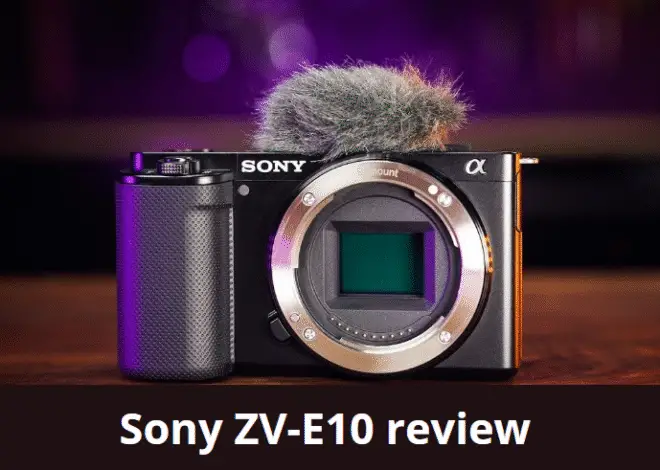
Canon EOS R vs EOS R7: How to Choose Your Right Camera?
As an Amazon Associate, I earn from qualifying purchases.
The Canon EOS R and EOS R7 are two different mirrorless cameras from Canon’s EOS R line of full-frame cameras which provide excellent features.
Based on your unique demands and tastes, one camera may be preferable to the other due to some substantial variances between these two models.
After evaluating everything, winners can be both EOS R and EOS R7 depending on your personal choice of needs and cost issues. Continue reading to discover what characteristics make any of the R or R7 your first camera.
Canon EOS R vs. EOS R7: Quick Comparison Table
Here are some quick comparisons between the two cameras:
| Features | Canon EOS R | Canon EOS R7 |
| Sensor | 30.3 MP full-frame CMOS | 32 MP full-frame CMOS |
| Image Processor | DIGIC 8 | DIGIC X |
| Autofocus System | Dual Pixel CMOS AF | Higher-density AF with Face and Eye Tracking |
| Image Stabilization | In-lens (select lenses) | In-body |
| Video Resolution | 4K UHD up to 30 fps | 4K UHD up to 60 fps |
| Total Pixels | Approx. 31.7MP | 34.4MP |
| Battery Life | 370 shots | 600 shots |
| Buying Link | Canon EOS R | Canon EOS R7 |
| Price | Approx. $1,499 | Approx. $2,499 |
What Are the Differences Between EOS R and EOS R7?
Let’s take a look at the similarities between the two cameras before discussing the differences.
Both cameras have a similar design and form factor, making it easy to switch between the two models. You will also find that both cameras use the same RF mount, allowing for compatibility with the same lenses and accessories.
Both cameras use Canon’s Dual Pixel CMOS AF technology, providing fast and accurate autofocus performance.
They also share a common feature in touchscreen display, both EOS R and R7 have a fully articulating touchscreen display, allowing for versatile shooting angles and easy navigation of camera settings.
Let’s now talk briefly about the differences between the Canon EOS R and R7.


Sensor
The Canon EOS R has a 30.3 MP full-frame CMOS sensor, while the EOS R7 has a higher-resolution 32 MP full-frame CMOS sensor.
The higher resolution of the EOS R7’s sensor allows for greater detail and improved image quality, particularly in large prints or crops. The larger number of pixels also enables a higher level of noise reduction and improved dynamic range compared to the EOS R.
Although the EOS R’s 30.3 MP sensor still provides excellent image quality and is well-suited for a wide range of photography and videography applications.
Ultimately, the EOS R7’s 32 MP sensor is a good choice for those who prioritize image quality and the EOS R’s 30.3 MP sensor is a better choice for those who prioritize budget and still require excellent image quality.
Image Processor
The Canon EOS R has a DIGIC 8 Image Processor, while the EOS R7 has a newer and more powerful DIGIC X Image Processor.
The DIGIC X Image Processor in the EOS R7 provides improved processing speed, allowing for faster burst shooting, improved autofocus performance, and better image quality in high-ISO shooting scenarios compared to the DIGIC 8 Image Processor in the EOS R.
Additionally, the DIGIC X Image Processor in the EOS R7 provides improved video performance, including the ability to record 4K UHD video at 60 fps.
Overall, the DIGIC X Image Processor in the EOS R7 provides improved performance and capabilities compared to the DIGIC 8 Image Processor in the EOS R, but both processors still provide excellent results for most photography and videography applications.
Autofocus System
Both the Canon EOS R and EOS R7 use Dual Pixel CMOS AF technology, but there are some differences in their autofocus systems.
The EOS R has a Dual Pixel CMOS AF system, which provides fast and accurate autofocus performance, particularly when shooting stills.
The EOS R7, on the other hand, has a higher-density autofocus system with Face and Eye Tracking. This allows for improved tracking of moving subjects, particularly in live view or video shooting.
In general, the EOS R7’s autofocus system provides improved performance and versatility compared to the EOS R, particularly for shooting moving subjects.
However, both cameras still provide excellent autofocus performance for most photography and videography applications.
Image Stabilization
Some of the lenses for the EOS R have in-lens image stabilization, which provides stabilization for the entire image.
The EOS R7, however, has in-body image stabilization, which provides image stabilization for any lens that is attached to the camera, regardless of whether the lens has image stabilization or not.
In general, in-body image stabilization is more versatile and allows for image stabilization with a wider range of lenses, but in-lens image stabilization can provide improved image quality and smoother stabilization in some situations.
Ultimately, the choice between the two approaches to image stabilization will depend on the individual photographer’s needs and preferences, and both approaches have their strengths and weaknesses.
Video Resolution
The Canon EOS R and EOS R7 both offer excellent video capabilities, but there are some differences in their video resolution.
The EOS R can record 4K UHD video at up to 30 fps and 1080p Full HD video at up to 60 fps. It also has support for Canon’s C-Log color profile, which provides a flat image profile with increased dynamic range and color grading flexibility.
The EOS R7, on the other hand, can record 4K UHD video at up to 60 fps and has improved video capabilities, including improved autofocus performance, improved image quality in low-light scenarios, and support for 10-bit 4:2:2 HDR recording.
The EOS R7 can shoot better videos than the EOS R.
Overall, the EOS R7 offers improved image quality and autofocus compared to the EOS R, but it is also a more expensive model.
The EOS R may be a better option for those who prioritize budget and are looking for a well-rounded camera that still delivers excellent results.
Canon EOS R vs. EOS R7, Which One to Choose Finally?
Your particular photography needs and preferences will determine whether you choose the Canon EOS R or R7.
If you’re looking for a camera with good still image quality and a balance of features at a more affordable price point, then the EOS R might be the right choice for you. It has a good autofocus system and image processor and supports 4K UHD video recording.
On the other hand, if you’re looking for a camera with the highest level of performance and versatility, then the EOS R7 might be the better choice.
It has a more advanced autofocus system with Face and Eye Tracking, a more powerful image processor, improved image quality in high-ISO scenarios, and support for 10-bit 4:2:2 HDR recording.
In general, the EOS R7 is a more advanced camera designed for photographers who require the highest level of performance and versatility, while the EOS R is a more balanced camera that provides good performance at a more affordable price point.
Ultimately, the best choice will depend on your specific needs and preferences, as well as your budget.
It’s important to consider the types of photography and videography you want to do, as well as your level of experience, to determine which camera is the best fit for you.
- Read Also: Canon 80D vs 90D Camera: Which One Should You Go For?
- Read Also: Canon EOS R3 vs R5 Camera: Which One Should You Go For?
- Read Also: Nikon D3500 vs D5600 Cameras: What Are The Differences?
- Read Also: Canon Rebel T7 vs T7i Camera: Which One Should You Pick?
- Read Also: Nikon Z5 vs Z6 Camera: What Are the Major Differences?



